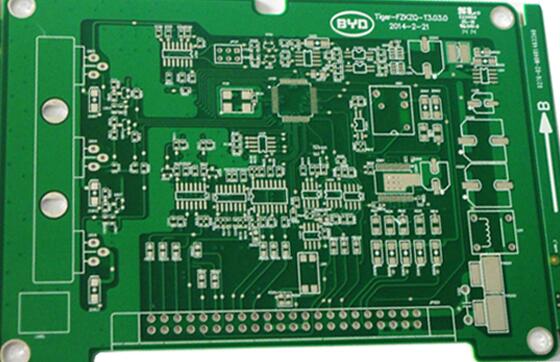SMT processing quality is a sign of enterprise technology and management level
Pay attention to product innovation in terms of energy saving and emission reduction. PCB factoriesmust learn to attach importance to Internet technology and realize the practical application of automated monitoring and intelligent management in production through the integration of overall industry knowledge.
In today's increasingly fierce competition for electronic products, improving the quality of SMT patch processing has become one of the most critical factors. The quality of SMT patch processing is not only a sign of the level of enterprise technology and management, but also closely related to the survival and development of the enterprise. We have formulated a related quality control system based on the actual production situation of the company.
1. With "zero defect" as the production goal, set SMT patch processing quality process control points.
1. 1 Setting of quality process control points
Achieving "zero defect" production is unrealistic, but the implementation of the "zero defect" production goal in the entire plant can greatly improve the quality awareness of the entire plant's employees and provide a steady stream of motivation for timely and standardized resolution of quality abnormalities in production. In order to ensure the normal progress of SMT processing, the quality inspection of each process must be strengthened to monitor its operating status. Therefore, it is particularly important to set up quality control points after some key processes, so that quality problems in the previous process can be found and corrected in time to prevent unqualified products from entering the next process. The setting of quality control points is related to the production process. We set the following quality control points during processing.
1) PCB incoming inspection
a. Whether the printed board is deformed; b. Whether the pad is oxidized; c. Whether the surface of the printed board is scratched;
Inspection method: visual inspection according to inspection standards.
2) Solder paste printing inspection

a. Whether the printing is complete; b. Whether there is bridging; c. Whether the thickness is uniform; d. Whether there is a sag; e. Whether there is any deviation in printing;
Inspection method: visual inspection according to inspection standards or inspection with magnifying glass.
3) Inspection before reflow soldering furnace after placement
a. The placement of components; b. Whether there is a film drop; c. Whether there are any wrong parts; d. Whether there is any displacement;
Inspection method: visual inspection according to inspection standards or inspection with magnifying glass.
4) Check after going through the reflow oven
a. The soldering condition of the components, whether there are bad soldering phenomena such as bridging, tombstones, dislocation, solder balls, and virtual soldering. b. Solder joints.
Inspection method: visual inspection according to inspection standards or inspection with magnifying glass.
5) Plug-in check
a. Whether there are missing parts; b. Whether there are any wrong parts; e. Insertion of components;
Inspection method: visual inspection according to inspection standards.
All checkpoints must fill in detailed and true reports, and continue to feed back and improve the factors that affect the quality until it is close to the "zero defect" production goal.
2. Implementation of management measures
In order to carry out effective quality management, in addition to strictly controlling the production quality process, we also adopt the following management measures:
1. After the components or parts processed by outsourcing are in the factory, they need to undergo random inspection (or full inspection) by the inspector before entering the warehouse. If the pass rate is found to be less than the national standard, the product should be returned, and the inspection result should be recorded in writing.
2. The Quality Department shall formulate necessary quality-related rules and regulations and the department's work responsibility system. Regulations are used to restrict man-made quality accidents that can be avoided, rewards and penalties are clear, economic means are used to participate in quality assessment, and monthly quality awards are set up within the company.
3. A total quality (TQC) organization network is established within the enterprise to provide timely and accurate quality feedback. The best quality of personnel is selected as the quality inspector of the production line, and the administration is still under the management of the quality department, so as to avoid the interference of other factors on the quality judgment work.
4. Ensure the accuracy of inspection and maintenance equipment. Product inspection and maintenance are carried out through necessary equipment and instruments, such as multimeters, anti-static wrists, soldering irons, ICT, and so on. Therefore, the quality of the instrument itself will directly affect the production quality. It is necessary to send inspection and measurement in time according to regulations to ensure the reliability of the instrument.
iPCB has passed ISO9001:2008, ISO14001, UL, CQC and other quality management system certifications, produces standardized and qualified PCB products, masters complex process technology, and uses professional equipment such as AOI and Flying Probe to control production and X-ray inspection machines. Finally, we will use double FQC inspection of appearance to ensure shipment under IPC II standard or IPC III standard.